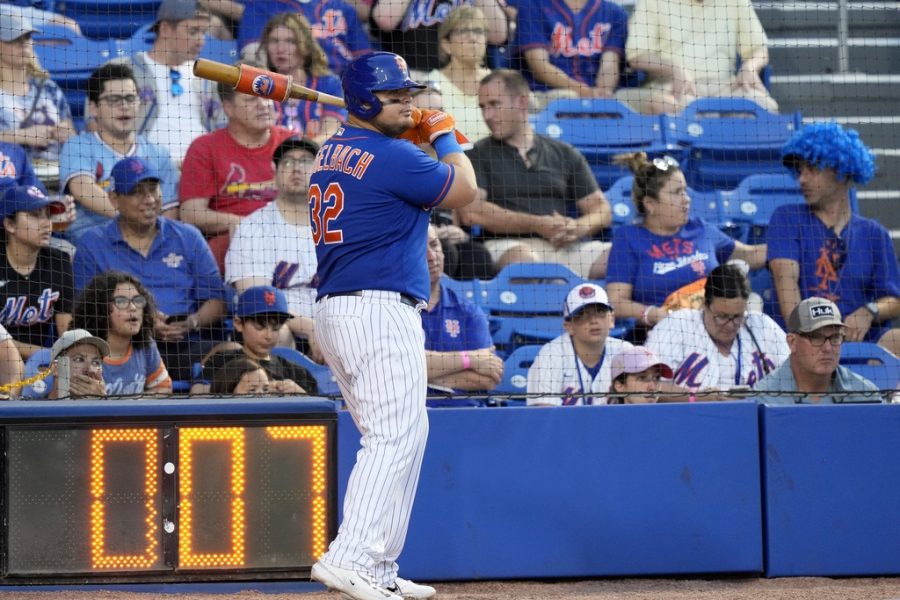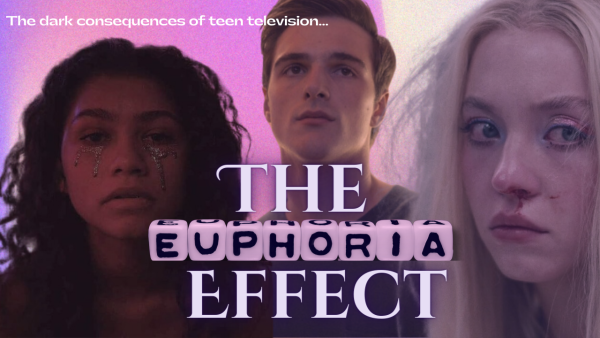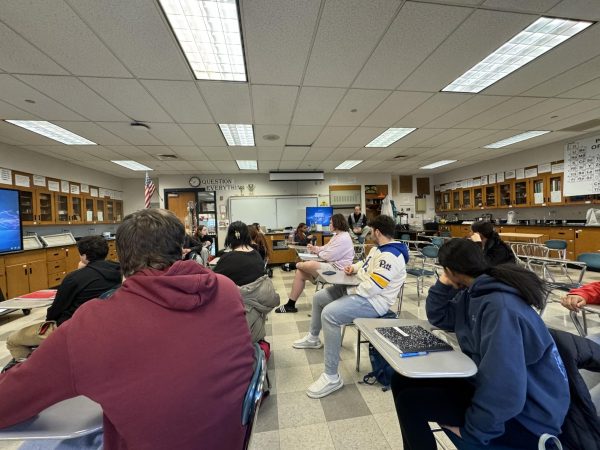OPINION: Don’t knock the clock
The MLB pitch clock fires up today for Opening Day, 2023. The clock will help baseball, it’s time to embrace the change.
The pitch clock runs as New York Mets’ Daniel Vogelbach (32) warms up on deck during the fifth inning of a spring training baseball game against the St. Louis Cardinals, Saturday, March 25, 2023, in Port St. Lucie, Fla. (AP Photo/Lynne Sladky)
Picture this: You attend a 7 o’clock game of your beloved Philadelphia Phillies but you’re running a little late. You arrive at your seats a little after 8pm and relax…wait, it’s the 5th already???
To many mixed opinions, the pitch clock is here and is here to stay in 2023. For years, many have complained about the pace of play in baseball being too slow and games taking too long. This year, the game will drastically change forever.
Rules
The rules are relatively simple; the clock dictates 15 seconds in between pitches with no runners on base, 20 seconds with runners on base, and 30 seconds between batters. If a pitcher fails to meet this requirement, an automatic ball will be called.
To illustrate how fast this is, of the 618 MLB pitchers who threw at least 100 pitches last season, only 41 of them averaged the now-required 15 seconds or faster between pitches with nobody on base. Additionally, over 27% of pitchers took an average of 20 seconds or more between pitches. It’s needless to say that there will be an adjustment period, and hopefully spring training has solved it mostly.
For batters, they have less time to get ready, having to be in the box and alert to the pitcher by the 8 second mark. If a batter fails to meet this requirement, an automatic strike is called.
The clock starts when the pitcher receives the ball back from his catcher, and stops when the pitcher starts his delivery, not when the ball is released.
The rule also includes allowing fewer pickoff attempts to first base, eliminating this potential loophole. In each plate appearance, the pitcher gets two attempts to try and throw out the runner as he takes his lead from whichever base. A third attempt is allowed but only if the pitcher is successful in picking off the base runner. If not successful, the runner is awarded the next base.
Additionally, Pitchers are allowed to have two timeouts per plate appearance while hitters are allowed one.
The Effect
The pitch clock, amongst many other rules, was experimented upon in the minor leagues in 2022 to substantial results. The clock shaved anywhere from 18-31 minutes across the minors. This spring training, games lasted 26 minutes less at the 2:35 mark.
The Backlash
If you ever spend time on the baseball side of social media these days, you’ll notice it’s in flames. Some comments read as follows, “Such a joke”, “Anyone that wants baseball games to be shorter and quicker doesn’t actually like the sport”, “This isn’t baseball”, “Pitch clock is ruining the game”, “I’m already tired of this”, “truly pathetic”, and so on. I think you get the idea, there is massive fan recoil.
While I respect others’ opinions and input to better the game, I think many fans are just too quick to react after seeing the violations in SPRING TRAINING. You don’t have to like the rules, but at least give them a real chance. This might not be a final product, and if it needs to be 18 seconds as opposed to 15, or no clock in the playoffs, etc, I’m all for it.
My Opinion
As for me, this is going to be phenomenal for the growth of the sport. I think it’s sheer poppycock to say that baseball fans aren’t “real fans” for wanting change.
The problem isn’t the length of the games, as the average time was 3 hours and 3 minutes in 2022, just short of the NFL’s 3 hours and 12 minutes, a sport whose length is rarely complained about. No, the true problem that baseball has been dealing with in recent years is pace of play. If the game lasts 4 hours but is action packed and the most electrifying game you’ve ever seen, I doubt anyone would have a problem. That’s exactly what this change allows for.
To all those saying this isn’t baseball anymore and it’s always been a slow game, you’re factually wrong. Going as far back as 1924 shortly after the dead ball era (the period of time before Babe Ruth and the power hitters), games lasted a measly average of 1 hour and 51 minutes. Too long ago? Well, in the 70s and early 80s, games never surpassed the 2:40 hour mark. Even as recently as 2010, games were 13 minutes shorter at 2:50. Point is, the whole “slow” factor is a new thing, not a traditional aspect of the nation’s pastime.
Strategy and analytics in sports have been put at the forefront in recent years, and the uprise in total time of game in MLB reflects that perfectly. Staring down the batter, interrupting said staredown with a timeout, figuring out exactly what pitch you want to throw, and taking practice swings as you process every step of your approach, these are all individually beneficial to players’ success. You can’t blame the players for this uprise in time as the goal of a team is to win, while the goal of a league is to present this in an entertaining fashion. Now, the league is making sure the entertainment factor is more present than ever, yet many complain.
To all those saying that there’s gonna be too many violations, you’re also wrong. In fact, statistics show that a pitch clock violation will actually be a relative oddity in 2023. While there were 2.03 violations per spring training game on average in the first week, this has now decreased to 1.24. Fascinatingly, the violation statistics in the minors last year were eerily similar in that 2 range to start the year, and came down all the way to a meager 0.41 per game in week 24. If MLB continues to resemble the minor leagues, then this should ease everyone’s anxiety about constant violations.
To all those saying it’s not enough time for the “chess match” aspect of baseball between hitters and pitchers, I beg to differ. The addition of a new technology called pitchcom will easily allow time for signs to be called and for there to be no cross ups between pitcher-catcher batteries. Gone are the days of catchers putting a signal down with their hands to signal what pitch they want thrown. While many including myself enjoyed this facet, it was time for change, especially following the 2017 Astros sign stealing scandal. PitchCom is a new electronic device that allows catchers and pitchers to communicate with each other through pressing different buttons that signal pitches. This isn’t only immune against sign stealing, but also allows for quicker pace of play.
The game of baseball is finally on the uprise, and while I definitely wasn’t on the panicking train of “baseball is dying” over the past years, it definitely wasn’t on pace with the progression of major sports like the NFL and NBA. To grow a game, you need to appeal to more fans and in doing so, the casual fan. Baseball cannot risk losing a casual fan’s attention with a seemingly monotonous game full of unnecessary pausing. With faster games, more offense, and more stolen bases, the new rules like the pitch clock, shift ban, and bigger bases are going to propel baseball back to the top of the sports world where it belongs.












